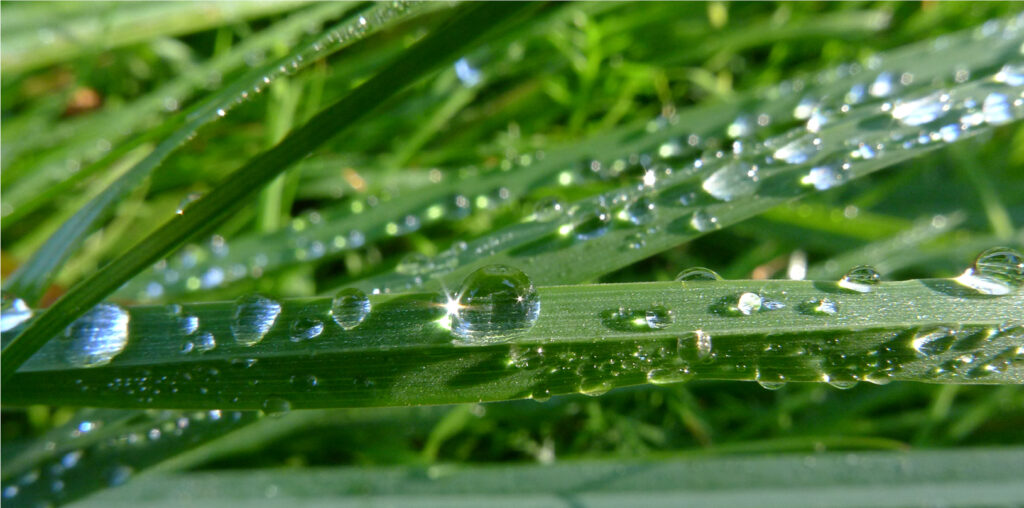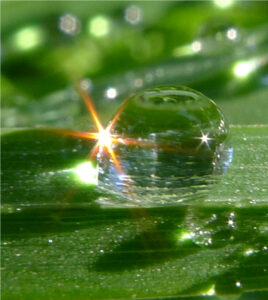
Glistening like diamonds in the morning sun, the small dew drops cling to the grass blades.
The slow wind gently caresses the nearest grass blade. To and fro the tip rocks, irregularly. Settles, for a moment still – and then a gust gives it a puff again. The little dew drops cling to the blade, firmly secured to it by the mutual attraction.
In the morning when the sun is low, the droplets can be observed, like small diamonds on the grass. A square metre of grass can contain up to one decilitre of dew on a moist morning. Soon they will dry up though. But in the spring and autumn months, the sun’s radiation is weaker, as it takes more than half of the solar energy radiating during a day to evaporate the dew. Consequently, the mornings are wet.

In a temperate climate, about half of the volume of the droplets comes from the atmosphere. The other half comes from the plant itself. On cool moist nights, when the soil is saturated with moisture, pressure from the roots push water into the plant. As the plant is at rest in the dark hours, it cannot transpire the absorbed water as vapour. Instead it gives off small droplets – guttation – from the edge of the leaves. Such guttation contains a high amount of dissolved carbon dioxide, making it similar to some spa waters.
Perhaps that is the reason dew has been used for healing. In the 19th century, the German Sebastian Kneipp (1821-1897), a pioneer of hydrotherapy, recommended his patients walking barefoot on morning dew, a as a healing practice. As the feet sink into the wet grass, a tingling sensation is felt, and after a while a refreshing feeling. At one time this practice was spread wideley, “Kneipp walking” being popular all over Europe. But now it is almost forgotten, and the dew drops rest on the grass undisturbed.